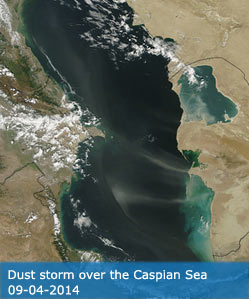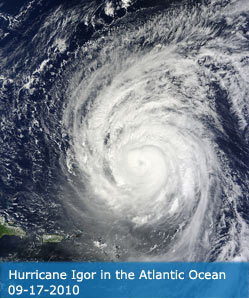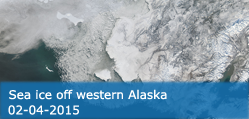Science Team
Publications
Zhang, QY, Xiao, XM, Braswell, B, Linder, E, Baret, F, Moore, B (2005). "Estimating light absorption by chlorophyll, leaf and canopy in a deciduous broadleaf forest using MODIS data and a radiative transfer model". REMOTE SENSING OF ENVIRONMENT, 99(3), 357-371.
Abstract
In this paper, we present a theoretical and modeling framework to estimate the fractions of photosynthetically active radiation (PAR) absorbed by vegetation canopy (FAPAR(canopy)), leaf (FAPAR(leaf)), and chlorophyll (FAPAR(chl)), respectively. FAPAR(canopy) is an important biophysical variable and has been used to estimate gross and net primary production. However, only PAR absorbed by chlorophyll is used for photosynthesis, and therefore there is a need to quantify FAPAR(chl). We modified and coupled a leaf radiative transfer model (PROSPECT) and a canopy radiative transfer model (SAIL-2), and incorporated a Markov Chain Monte Carlo (MCMC) method (the Metropolis algorithm) for model inversion, which provides probability distributions of the retrieved variables. Our two-step procedure is: (1) to retrieve biophysical and biochemical variables using coupled PROSPECT+SAIL-2 model (PROSAIL-2), combined with multiple daily images (five spectral bands) from the Moderate Resolution Imaging Spectroradiometer (MODIS) sensor; and (2) to calculate FAPAR(canopy), FAPAR(leaf) and FAPAR(chl) with the estimated model variables frorn the first step. We evaluated our approach for a temperate forest area in the Northeastern US, using MODIS data from 2001 to 2003. The inverted PROSAIL-2 fit the observed MODIS reflectance data well for the five MODIS spectral bands. The estimated leaf area index (LAI) values are within the range of field measured data. Significant differences between FAPAR(canopy) and FAPAR(chl) are found for this test case. Our study demonstrates the potential for using a model such as PROSAIL-2, combined with an inverse approach, for quantifying FAPAR(chl), FAPAR(leaf), FAPAR(canopy), biophysical variables, and biochemical variables for deciduous broadleaf forests at leaf- and canopy-levels over time. (C) 2005 Elsevier Inc. All rights reserved.
DOI:
10.1016/j.rse.2005.09.009
ISSN:
0034-4257




